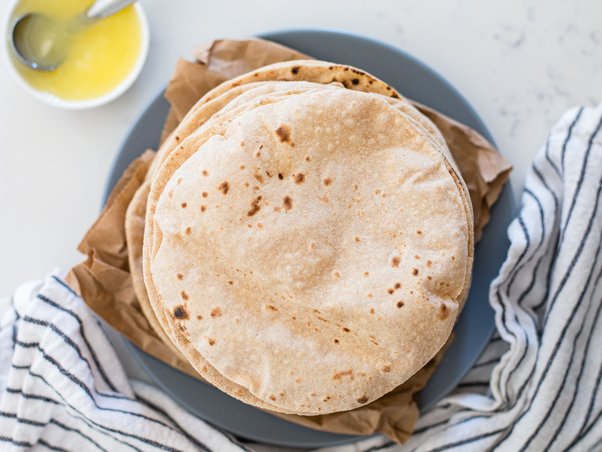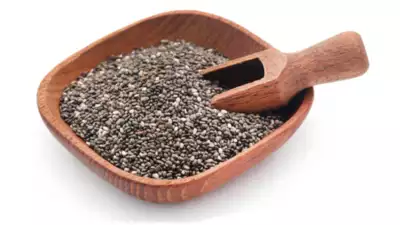Roti, a staple in many Indian households, is more than just a delicious accompaniment to your curry. It’s packed with nutrients that contribute significantly to a balanced diet. Depending on the type of flour used, each roti offers unique health benefits. Here’s an overview of the nutritional profiles of various types of rotis, including whole wheat roti, Bajra roti, oats roti, Kuttu roti, and Ragi roti. Understanding the calorie content, vitamins, and minerals in these rotis can help you make informed dietary choices.
The Classic Whole Wheat Roti
Whole wheat roti is a classic choice, loved for its soft texture and mild flavor. Made from whole wheat flour, it is rich in dietary fiber, aiding digestion and helping maintain healthy blood sugar levels.
Nutritional value of 1 Whole Wheat Roti (Approx. 30g):
- Calories: 71
- Protein: 3g
- Fat: 0.4g
- Carbohydrates: 15g
- Fiber: 2.5g
Whole wheat rotis are an excellent source of B vitamins, particularly niacin (B3), which plays a crucial role in energy metabolism and DNA repair. They also contain minerals like magnesium and phosphorus, essential for bone health and energy production.
Bajra Roti
Bajra, or pearl millet, is an ancient grain known for its resilience and high nutritional value. Bajra rotis have a slightly coarse texture and a nutty flavor.
Nutritional value of 1 Bajra Roti (Approx. 30g):
- Calories: 97
- Protein: 3.5g
- Fat: 1.2g
- Carbohydrates: 18g
- Fiber: 2.8g
Bajra rotis are particularly rich in iron, making them an excellent choice for preventing anemia. They also provide a good amount of magnesium, which helps in muscle function and maintaining a healthy heart rhythm. Bajra is gluten-free, suitable for those with gluten intolerance or celiac disease.
Oats Roti
Oats are celebrated for their heart-healthy properties, and oats roti bring these benefits to the table. They have a slightly chewy texture and a mild, pleasant flavor.
Nutritional value of 1 Oats Roti (Approx. 30g):
- Calories: 75
- Protein: 3g
- Fat: 1g
- Carbohydrates: 14g
- Fiber: 2g
Oats rotis are a fantastic source of soluble fiber, specifically beta-glucan, which has been shown to lower cholesterol levels and improve heart health. They also provide good amounts of manganese and phosphorus, vital for bone formation and nutrient metabolism.
Kuttu Roti
Kuttu, or buckwheat, is often used during fasting periods in India. Despite its name, buckwheat is not related to wheat and is naturally gluten-free.
Nutritional value of 1 Kuttu Roti (Approx. 30g):
- Calories: 84
- Protein: 3g
- Fat: 0.6g
- Carbohydrates: 18g
- Fiber: 2.7g
Kuttu rotis are rich in rutin, a bioflavonoid that supports blood circulation and strengthens capillaries. They are also high in magnesium and potassium, which help regulate blood pressure and support heart health.
Ragi Roti
Ragi, or finger millet, is another nutritious option, known for its high calcium content and suitability for gluten-free diets.
Nutritional value of 1 Ragi Roti (Approx. 30g):
- Calories: 90
- Protein: 2.7g
- Fat: 0.9g
- Carbohydrates: 17g
- Fiber: 2.5g
Ragi rotis are excellent for bone health due to their high calcium content. They also provide significant amounts of iron, which is crucial for preventing anemia and maintaining healthy blood cells.
Conclusion
Each type of roti brings unique nutritional benefits to your meal, making it important to vary your choices to get a broad spectrum of nutrients. Whole wheat roti is great for fiber and B vitamins, Bajra roti for iron and magnesium, oats roti for heart-healthy fiber, Kuttu roti for bioflavonoids and minerals, and Ragi roti for calcium and iron. Incorporating these different rotis into your diet can help ensure you receive a wide range of nutrients, supporting overall health and well-being.




